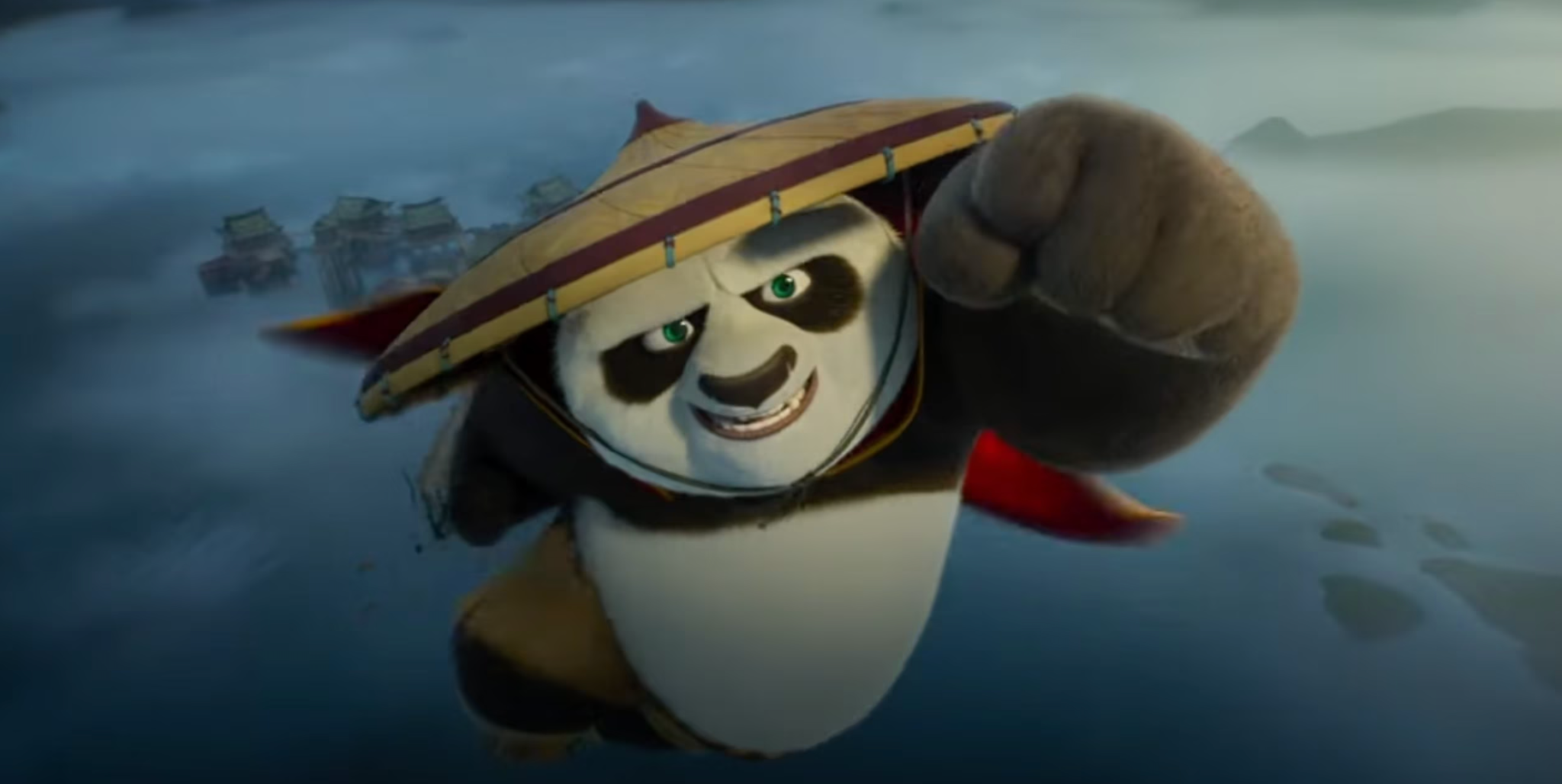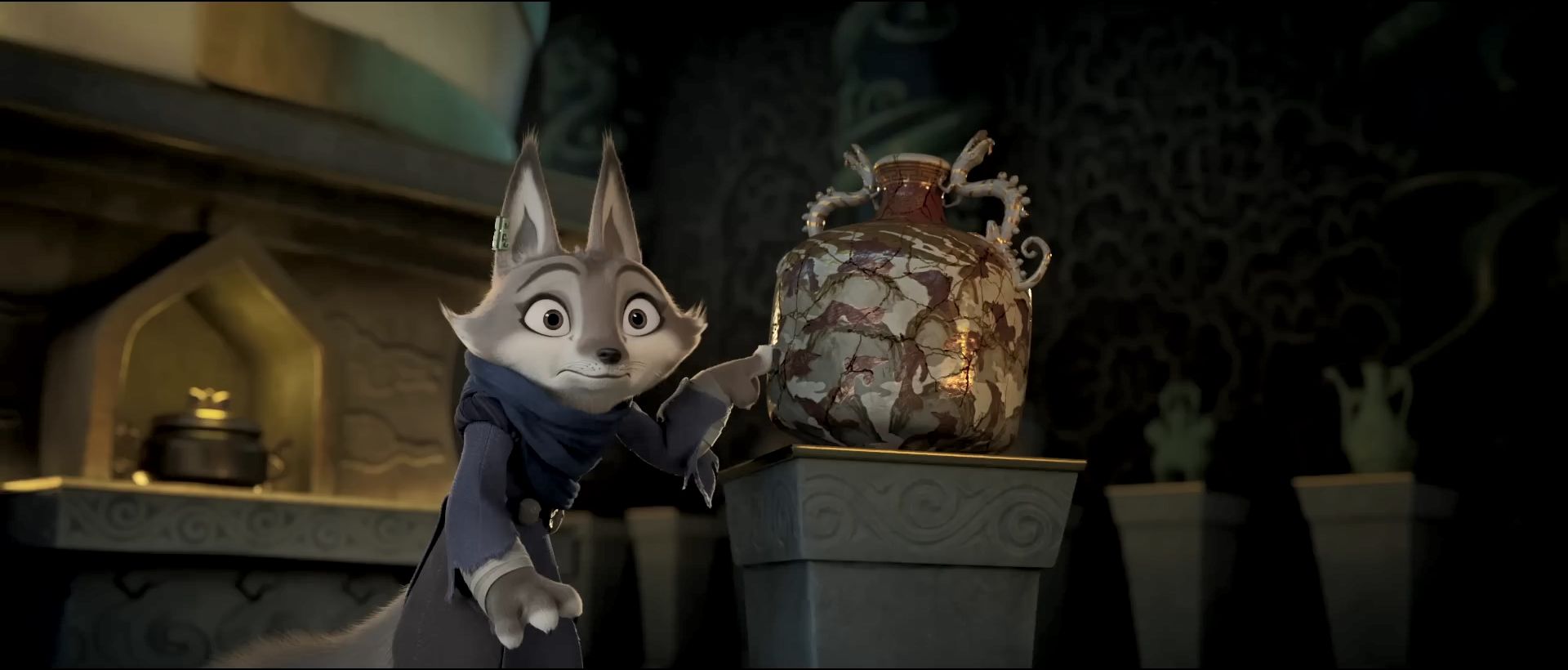For as much style and breathless visual excitement as Kung Fu Panda 4 has, something is missing. Kids will love it, and adults like myself will likely be entertained. But despite all that’s right with Kung Fu Panda 4, I couldn’t help but feel hollow, as if the heart was gone.
Still, the Kung Fu Panda franchise is remarkably reliable. Mark Mitchell is in the director’s chair this time, and like every Kung Fu Panda installment, the visuals have gotten even more dynamic and inventive. The script by Jonathan Abiel, Glenn Berger, and Darren Lemke tackles the requisite heavy themes and makes it palpable for the kiddies. Abiel and Berger wrote the last three Kun Fu Panda movies, so it’s not like they are neophytes.

Jack Black as Po is as goofy and lovable as ever. Black is the secret sauce to the Kung Fu Panda movies, as his voice and timing have molded what could have been a one-note joke into a complex and layered character. He’s a hero who has grown into the role but has never lost his essential Po-ness. He’s a lovable dork who happens to be a badass.
In Kung Fu Panda 4, the plot sees Po being told by Master Shifu (Dustin Hoffman) that it is time to stop being the Dragon Warrior and become a master to replace Master Oogway (Randall Duk Kim). After all, it’s why Oogway gave Po his staff. Except Po doesn’t want to stop being the Dragon Warrior.
Even if he was, how does one choose a replacement? Surely it can’t be Zhen (Awkwafina), the stealthy fox thief in the night, that breaks into the monastery to steal the relics? Or can it?
Perhaps Kung Fu Panda 4 feels slightly off because the Furious 5 and Shifu play little to no part in it. Instead, we are told they are each on their own adventures, leaving Po and Shifu alone to hold down the fort. Or, it could be the villain Chameleon (Viola Davis), who can shape-shift into anyone who wishes to learn kung-fu and plans to steal Master Oogway’s staff and knowledge from long-dead kung-fu masters. If this sounds familiar, it’s because it was the same villain plot in the third one.
But what drives Kung Fu Panda 4 is Po and Zhen’s fear of changing. More than anything, Kung Fu Panda 4 is a buddy road movie. Po and Zhen are on one adventure, and Po’s two dads, Mr. Ping (James Hong) and Li Shan (Bryan Cranston) are on their own adventure as they chase after Po for fear that he’s in over his head.
Now, ordinarily, I would be all in for a buddy road movie where the impish and legendary Hong and the wryly hilarious and intense Cranston team up in Crosby & Hope-style shenanigans. But alas, it’s no dice. We are given too little of them; worse, they have little to do.
Master Shifu’s role seems reduced to make room for Black and Awakwafina. For a franchise so adept at juggling large casts, Kung Fu Panda feels scaled down. Even with Po and Zhen traveling to new cities where Po’s fame hasn’t reached, “Are my adventures really that regional?” But while the cast of characters has grown, the personalities have grown less distinct.
It is always nice to see and hear Ky Huy Quan as the Sunda, the surly Armadillo, and the head of the Den of Thieves. But Mitchell does little to imbue the Den of Thieves with any mood or atmosphere. Abiel, Berger, and Lemke’s script gives Quan almost nothing to work with, even while hinting at a backstory between Zhen and Sunda, but barely hinting at it.
However, the drastic change is part of the film’s overall point: change is inevitable. People and places constantly evolve; whether it’s for the better is always up for debate. The crux of Kung Fu Panda 4 is coming to terms with that. There’s a moment at the end between Po and Tai Leung (Ian McShane) that’s so good, and I wish it were more effective; it drives home this point.
Mitchell and his writers, however, change so much before the movie starts that we, the audience, are left flat-footed. Instead of giving us gradual change, we are forced into a world where change has already happened, and more change is on the horizon. Again, this is the point: stasis is comfortable but rarely healthy.
But the new characters the writers give us are underdeveloped or just carbon copies of characters we’ve already met. Worse still, the reasons why they are gone are mentioned once in a nifty piece of a visual gag and exposition and then never mentioned again. Kung Fu Panda 4 stays true to its core theme but often had me quoting Patrick Troguhton’s Doctor, “Oh, you’ve changed it? I don’t like it.”

However, the look of Kung Fu Panda 4 is its saving grace. The images are sharper, and the visuals are more playful. The Kung Fu Panda franchises have always been pretty to look at. However, Mitchell and the animators have stepped up their game with the fourth installment. The animation has an almost tactile texture as Mitchell and his team toss in varying styles while keeping its roots in old Chinese Kung Fu films firmly planted.
Mitchell and the animators make every frame of Kung Fu Panda engaging, even if the vibe is off and the story feels strained. I’m not blind to the fact that someone complaining about the changes a movie made in a film about how one must accept change comes off as someone missing the point. But it’s not the changes that hamper Kung Fu Panda 4 but what those changes were and how they go about them. In other words, Kung Fu Panda 4 is OK, and that’s okay too.
Images courtesy of Universal Pictures
Have strong thoughts about this piece you need to share? Or maybe there’s something else on your mind you’re wanting to talk about with fellow Fandomentals? Head on over to our Community server to join in the conversation!

